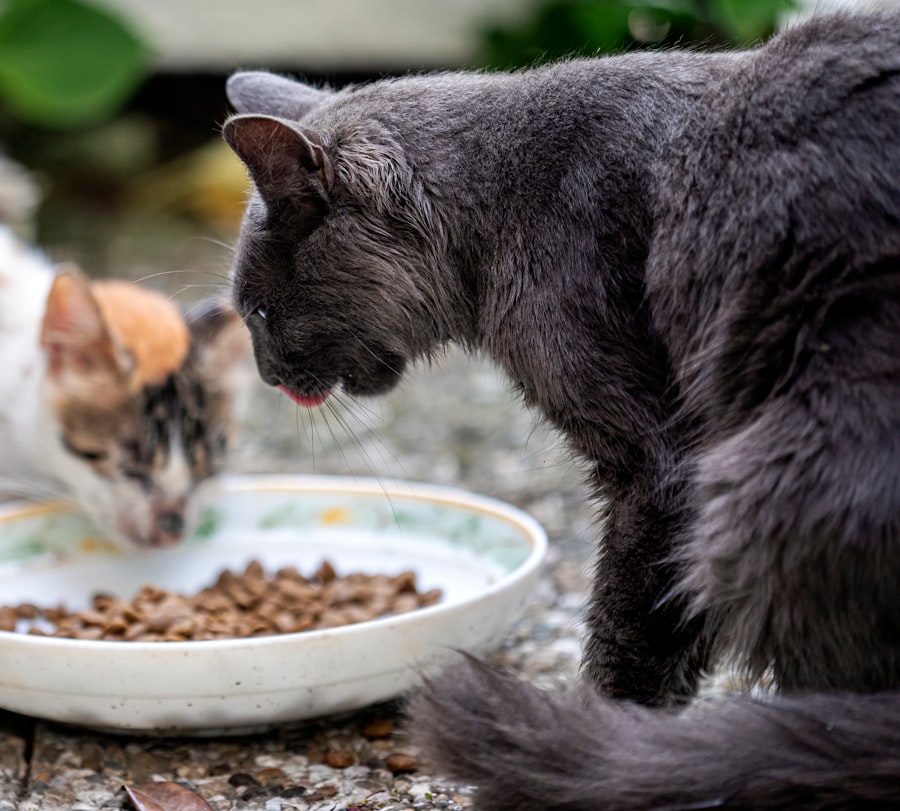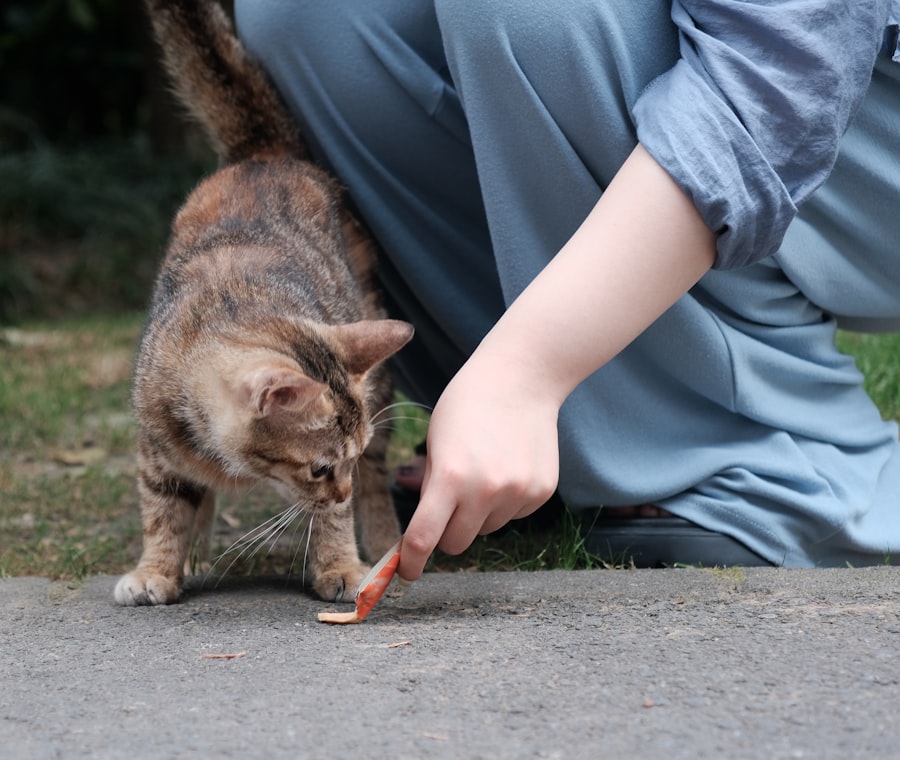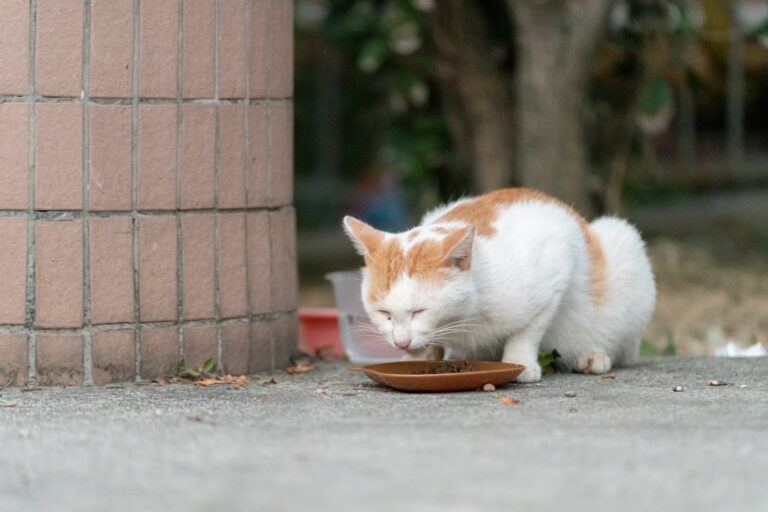Understanding the fundamentals of cat nutrition is essential for any cat owner who wishes to provide their feline companions with a healthy and balanced diet. Cats are obligate carnivores, which means that their bodies are designed to thrive on a diet primarily composed of animal-based proteins. Unlike humans and some other animals, cats require specific nutrients that are found predominantly in meat.
These include essential amino acids like taurine, arachidonic acid, and certain vitamins such as vitamin A, which they cannot synthesize from plant sources. Therefore, it is crucial for cat owners to ensure that their pets receive a diet rich in high-quality protein to support their overall health. In addition to protein, cats also need a variety of other nutrients, including fats, carbohydrates, vitamins, and minerals.
Fats provide energy and help in the absorption of fat-soluble vitamins, while carbohydrates can serve as a source of energy, although they are not as critical for cats as they are for some other animals. A well-rounded diet should also include essential vitamins and minerals to support various bodily functions, from bone health to immune system support. Understanding these nutritional needs is the first step in making informed choices about what to feed a cat, ensuring that they lead a long and healthy life.
Key Takeaways
- Understanding the basics of cat nutrition is essential for providing a balanced diet for your pet.
- Choosing the right type of food for your budget requires considering factors such as quality, ingredients, and your cat’s specific dietary needs.
- Comparing the cost of different cat food options can help you find the best value for your money without compromising on quality.
- Tips for finding budget-friendly cat food brands include looking for sales, buying in bulk, and considering store brands.
- Making homemade cat food on a budget can be a cost-effective and healthy alternative to commercial options, but it requires careful planning and research.
Choosing the Right Type of Food for Your Budget
When it comes to selecting the right type of food for a cat, budget considerations often play a significant role. Cat food is available in various forms, including dry kibble, wet canned food, and raw diets, each with its own price range and nutritional benefits. Dry food tends to be more affordable and convenient, as it has a longer shelf life and can be left out for cats to graze on throughout the day.
However, it is essential to choose high-quality dry food that contains real meat as the primary ingredient and avoids fillers like corn or soy. Wet food, on the other hand, is often more expensive but can provide additional hydration and is generally more palatable for cats. Many cats prefer the taste and texture of wet food, which can be particularly beneficial for picky eaters or those with dental issues.
For those on a tight budget, it may be worth considering a combination of both dry and wet food to balance cost with nutritional needs. Ultimately, the choice of food should align with both the cat’s dietary requirements and the owner’s financial constraints.
Comparing the Cost of Different Cat Food Options

The market offers a wide array of cat food options at varying price points, making it essential for cat owners to compare costs effectively. Premium brands often tout high-quality ingredients and superior nutritional profiles but can come with a hefty price tag. Conversely, budget brands may offer lower prices but might compromise on ingredient quality or nutritional value.
It is crucial for cat owners to read labels carefully and understand what they are paying for when selecting cat food. One effective way to compare costs is by calculating the price per serving or per calorie rather than just looking at the overall price of the package. This approach allows owners to determine which products offer the best value for money while still meeting their cat’s nutritional needs.
Additionally, considering bulk purchasing options or subscription services can lead to significant savings over time. By taking the time to compare different brands and types of cat food, owners can make informed decisions that align with their budget without sacrificing their pet’s health.
Tips for Finding Budget-Friendly Cat Food Brands
| Brand | Price per pound | Protein content | Grain-free options |
|---|---|---|---|
| Brand A | 1.50 | 30% | Yes |
| Brand B | 1.75 | 25% | No |
| Brand C | 1.40 | 28% | Yes |
Finding budget-friendly cat food brands does not have to mean compromising on quality. Many reputable brands offer affordable options that still meet the nutritional needs of cats. One effective strategy is to look for brands that prioritize transparency in their ingredient sourcing and manufacturing processes.
Often, lesser-known brands can provide high-quality nutrition at a lower cost than more established names due to lower marketing expenses. Another tip is to keep an eye out for sales and promotions at local pet stores or online retailers. Many stores offer discounts on specific brands or products during certain times of the year or when new products are introduced.
Additionally, joining loyalty programs or subscribing to newsletters can provide access to exclusive deals and coupons. By being proactive in seeking out budget-friendly options, cat owners can ensure their pets receive quality nutrition without breaking the bank.
Making Homemade Cat Food on a Budget
For those who enjoy cooking and want to take control of their cat’s diet, making homemade cat food can be a rewarding and cost-effective option. Preparing meals at home allows owners to select high-quality ingredients tailored to their cat’s specific dietary needs. However, it is crucial to ensure that homemade meals are nutritionally balanced.
Consulting with a veterinarian or a pet nutritionist can help owners create recipes that meet all of their cat’s nutritional requirements. When making homemade cat food on a budget, it is essential to focus on affordable protein sources such as chicken, turkey, or fish. These ingredients can often be purchased in bulk or on sale, making them economical choices.
Additionally, incorporating vegetables like carrots or peas can provide added nutrients without significantly increasing costs. By planning meals ahead of time and utilizing seasonal ingredients, cat owners can create nutritious homemade meals that are both satisfying for their pets and easy on the wallet.
Understanding the Importance of Portion Control

Portion control is a critical aspect of maintaining a cat’s health and preventing obesity. Overfeeding can lead to weight gain and associated health issues such as diabetes or joint problems. Understanding how much food a cat needs based on its age, weight, activity level, and overall health is essential for responsible pet ownership.
Most commercial cat foods provide feeding guidelines based on these factors, but individual needs may vary. To effectively manage portion sizes, cat owners can use measuring cups or kitchen scales to ensure they are providing the correct amount of food at each meal. Additionally, feeding multiple small meals throughout the day rather than one or two large meals can help regulate appetite and prevent overeating.
By practicing portion control, owners can help their cats maintain a healthy weight while also maximizing the value of their food budget.
Incorporating Affordable Treats into Your Cat’s Diet
Treats can be an enjoyable part of a cat’s diet but can also add up quickly in terms of cost. Fortunately, there are many affordable options available that allow owners to reward their pets without overspending. Simple treats like small pieces of cooked chicken or fish can be both nutritious and cost-effective alternatives to store-bought options.
These homemade treats not only save money but also allow owners to control the ingredients used. Additionally, many cats enjoy interactive playtime as a form of enrichment and reward. Using toys or engaging in play can serve as an alternative to treats while still providing positive reinforcement for good behavior.
By incorporating affordable treats and activities into their cats’ routines, owners can enhance their pets’ lives without straining their budgets.
Utilizing Coupons and Discounts for Cat Food Purchases
In today’s digital age, finding coupons and discounts for cat food purchases has never been easier. Many pet supply stores offer loyalty programs that provide members with exclusive discounts or points that can be redeemed for future purchases. Additionally, online retailers often have promotional codes available that can significantly reduce costs when shopping for cat food.
Social media platforms are also valuable resources for discovering deals on pet products. Many brands share special promotions or giveaways through their social media channels, allowing savvy shoppers to take advantage of these opportunities. By actively seeking out coupons and discounts, cat owners can stretch their budgets further while ensuring their pets receive quality nutrition.
Exploring Alternative Sources of Protein for Your Cat
While traditional sources of protein such as chicken or beef are commonly used in cat diets, there are alternative options that can be both nutritious and budget-friendly. Fish is an excellent source of protein that many cats enjoy; however, it should be fed in moderation due to potential mercury content in certain species. Other protein sources include eggs and dairy products like plain yogurt or cottage cheese, which can provide additional nutrients while being cost-effective.
Incorporating plant-based proteins into a cat’s diet should be approached with caution since cats require specific amino acids found primarily in animal products. However, small amounts of certain legumes or grains may be included as fillers in homemade recipes if balanced correctly with animal proteins. Exploring these alternative sources allows cat owners to diversify their pets’ diets while keeping costs manageable.
Budget-Friendly Ways to Ensure Your Cat Stays Hydrated
Hydration is vital for a cat’s overall health, yet many pet owners overlook this aspect when budgeting for their feline companions’ needs. Cats often do not drink enough water from bowls alone; therefore, incorporating wet food into their diet is an effective way to increase moisture intake without incurring significant costs. Wet food not only provides hydration but also adds variety to a cat’s meals.
Another budget-friendly method to encourage hydration is by providing fresh water daily in clean bowls placed in multiple locations around the home. Some cats prefer running water; thus investing in an affordable pet water fountain can entice them to drink more frequently while being cost-effective over time due to reduced water waste compared to traditional bowls.
Seeking Veterinary Advice on Budget-Friendly Cat Nutrition Options
Consulting with a veterinarian is an invaluable step in ensuring that a cat receives proper nutrition within budget constraints. Veterinarians can provide tailored advice based on individual health needs and dietary preferences while recommending affordable brands that meet those requirements. They may also suggest specific feeding strategies or homemade recipes that align with both nutritional standards and financial limitations.
Regular veterinary check-ups are essential not only for monitoring health but also for discussing any changes in diet or nutrition plans as needed over time. By maintaining open communication with veterinary professionals regarding budget-friendly options, cat owners can make informed decisions that benefit both their pets’ health and their wallets in the long run.
If you’re looking to manage your expenses while ensuring your feline friend gets the nutrition they need, the “Beginner Guide to Feeding Cats on a Realistic Budget” is a great resource. For those interested in extending their cost-saving measures beyond pet care, you might find the article on energy-efficient appliances helpful. It provides insights into the top five energy-efficient appliances for your kitchen, which can help you save money and reduce your environmental footprint. Check out the article here for more information on how to make your home more energy-efficient.
FAQs
What are some affordable options for feeding cats?
Some affordable options for feeding cats include dry cat food, store-brand cat food, and homemade cat food using affordable ingredients such as chicken, rice, and vegetables.
How can I save money on cat food?
You can save money on cat food by buying in bulk, using coupons, opting for store-brand options, and making homemade cat food using affordable ingredients.
What should I look for in affordable cat food?
When looking for affordable cat food, it’s important to consider the ingredients, ensuring that it provides the necessary nutrients for your cat’s health. Look for options with high protein content and minimal fillers.
Are there any specific ingredients I should avoid in affordable cat food?
When choosing affordable cat food, it’s best to avoid options with excessive fillers, artificial additives, and low-quality protein sources such as meat by-products.
How can I ensure my cat’s nutritional needs are met on a budget?
To ensure your cat’s nutritional needs are met on a budget, you can consult with a veterinarian to determine the appropriate diet for your cat’s specific needs. Additionally, you can supplement commercial cat food with occasional homemade meals using affordable, nutritious ingredients.






